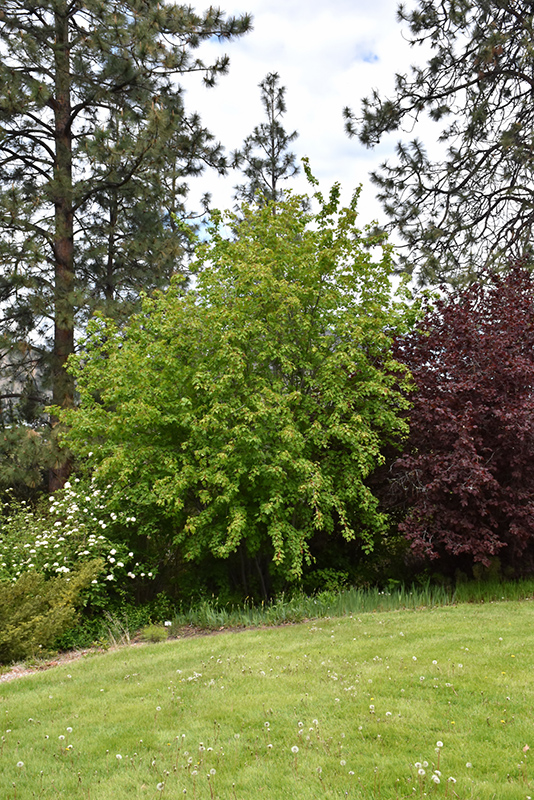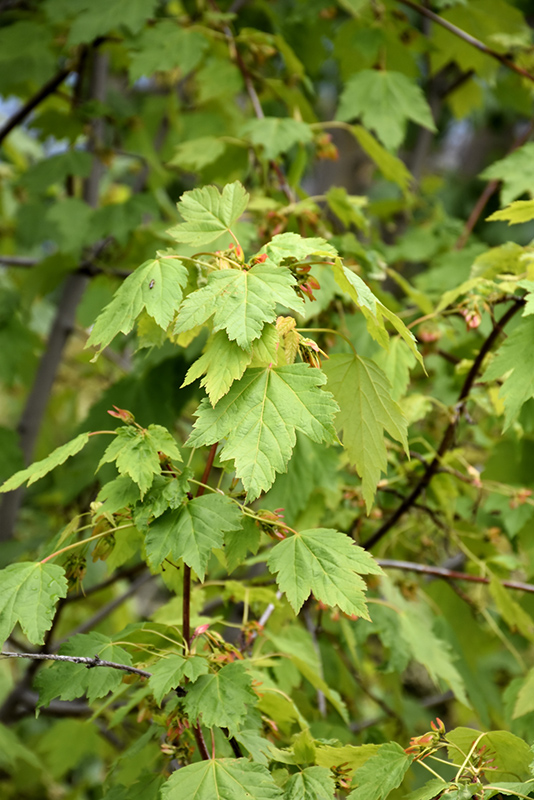Maple, (Bigtooth) Rocky Mountain Glow Acer glabrum Height: 25 feet Spread: 15 feet
Sunlight:
Hardiness Zone: 4a Other Names: Douglas Maple Description: A native woodland tree that grows well in the Pacific Northwest Desert; full sun to partial shade with adequate moisture, good red fall color and showy red fruits are its primary attributes. Ornamental Features Maple, (Bigtooth) Rocky Mountain Glow is primarily grown for its highly ornamental fruit. It features abundant showy rose samaras in late summer. It has rich green deciduous foliage. The lobed leaves turn an outstanding brick red in the fall. Landscape Attributes Maple, (Bigtooth) Rocky Mountain Glow is an open deciduous tree with an upright spreading habit of growth. Its average texture blends into the landscape, but can be balanced by one or two finer or coarser trees or shrubs for an effective composition. This is a relatively low maintenance tree, and is best pruned in late winter once the threat of extreme cold has passed. It has no significant negative characteristics. Maple, (Bigtooth) Rocky Mountain Glow is recommended for the following landscape applications; Planting & Growing Maple, (Bigtooth) Rocky Mountain Glow will grow to be about 25 feet tall at maturity, with a spread of 15 feet. It has a high canopy of foliage that sits well above the ground, and is suitable for planting under power lines. As it matures, the lower branches of this tree can be strategically removed to create a high enough canopy to support unobstructed human traffic underneath. It grows at a medium rate, and under ideal conditions can be expected to live for 50 years or more. This tree does best in full sun to partial shade. It prefers to grow in average to moist conditions, and shouldn't be allowed to dry out. This plant should be periodically fertilized throughout the active growing season with a specially-formulated acidic fertilizer. It is not particular as to soil type, but has a definite preference for acidic soils. It is quite intolerant of urban pollution, therefore inner city or urban streetside plantings are best avoided. This species is native to parts of North America. Special Attributes Big toothed Maples seeds are called the samaras, commonly known as helicopters for their winged shape. The size of seeds are about 1 inch long in chains.![]()
![]()
![]()
![]()
![]()
![]()
![]()
![]()
![]()
![]()
![]()


